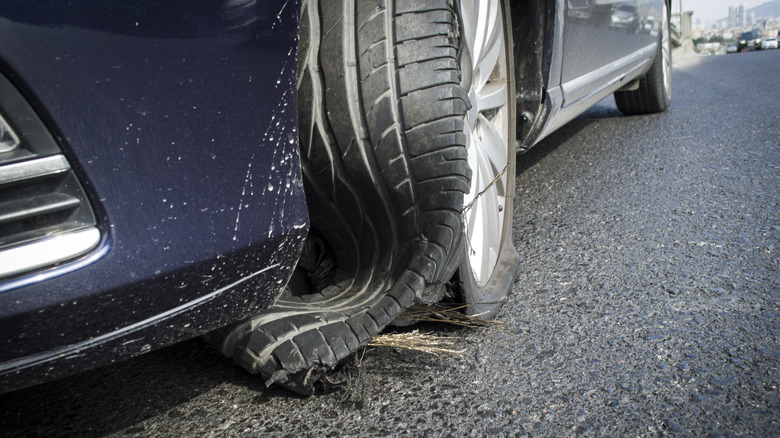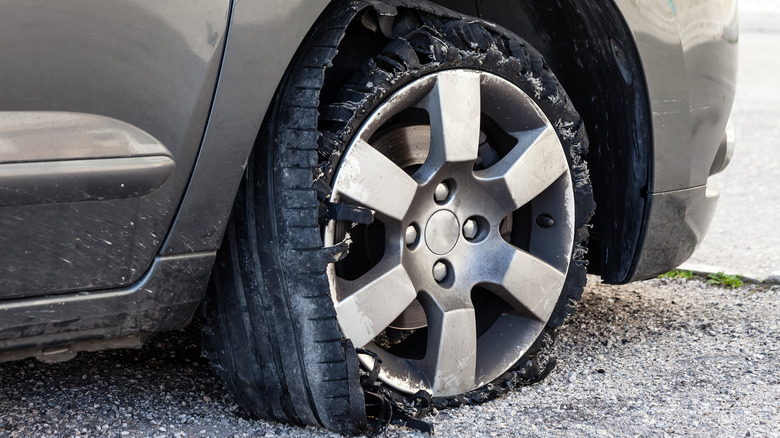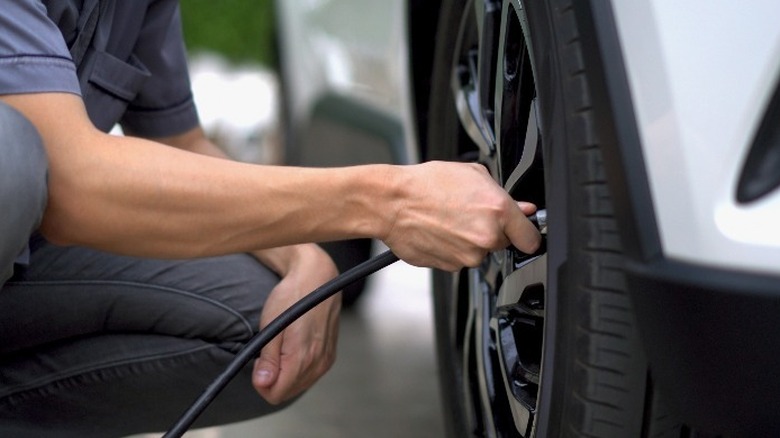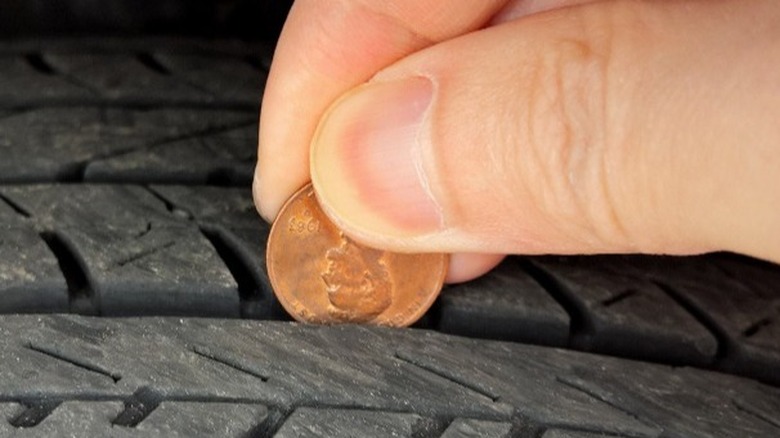What Really Happens When A Car Tire Fails
The tires in your vehicle do more than grip the road as you drive. A functional set of tires is an essential safety feature that helps stop your car when there's an emergency. A good set of tires can significantly reduce the braking distance of any vehicle on any road surface, whether wet or dry. According to Michelin, the brakes stop the wheels, but your tires stop the car. The National Highway Traffic Safety Administration (NHTSA) adds that tires are the only thing between you and the road. Tire failures cause approximately 11,000 crashes a year, making them the leading contributing factor to road accidents.
In most cases, tire failure does not occur suddenly and without warning. The NHTSA said the most common causes of tire failure are underinflation, bald or balding treads, blowouts, and tread separations. But in the absence of physical tire damage like cuts, irregular wear, or deep punctures, underinflation and worn down treads are the most significant causes of tire failure or tire blowouts. The NHTSA also suggests that hot weather and under-inflated tires are dangerous and contribute significantly to tire failure. But what really happens when a car tire fails?
Compromised rubber and catastrophic failure
The common automobile tire consists of two primary elements. The outer layer is a rubberized tread that's made to grip the road and provide protection for the inner liner. The inner liner is the part that holds the air. When the outer layer is compromised, the inner layer's potential for failure increases. When the inner layer is compromised, the tire loses air, and your vehicle no longer has the support of the tire. Catastrophic failure happens when your tire reaches a breaking point — that's when your tire experiences a blowout.
Tire blowouts happen when a sudden loss of air pressure occurs due to tire overheating caused by underinflation, overloading, or a compromised tire structure caused by worn treads, impacts with road obstacles, deep cuts, or punctured sidewalls.
Tire blowouts are more common in the summer, said the AAA, and the months of May to October are popularly known as "Tire Blowout Season" across the USA. When a tire blowout does happen, it can cause you to lose control of the vehicle, swerve violently to the other lane, or bring your car to a crashing halt — hopefully not by crashing into other vehicles on the road. When the weather gets hot, you can do a few things to prevent tire failure or blowouts on those long road trips.
Avoid failure by keeping an eye on air pressure
Don't forget to check the tire pressure before going on a long drive, or make it a habit to check the tire inflation at least once a week. The NHTSA claims tires lose an average of one PSI (pounds-per-square-inch) per month, and habitually driving with underinflated tires can cause tire overheating and lead to tire failure altogether.
The sidewall of an underinflated tire flexes more at lower air pressures and could affect your vehicle's handling and fuel economy, according to Consumer Reports. In addition, a severely bending sidewall causes excessive heat build-up inside the tire, shortening the rubber's lifespan, leading to tread separation or blowout.
Always follow the recommended tire pressure on the vehicle placard found in your vehicle's door jambs or owner's manual. Never overinflate the tires above the manufacturer's recommended tire pressure. If you notice a tire that consistently loses air pressure, you could be dealing with a slow leak caused by a small puncture, faulty valves, or expired rubber. It's good to have a separate tire gauge for emergency or maintenance scenarios in your car.
Don't forget tread depth and physical damage checks
While checking the tire pressure, keep in mind to pay close attention to the tires' tread depths. Look for the treadwear indicators or wear bars on each tire. If the wear bars are flush or level with the treads, replace the tire immediately. As Bridgestone suggests, bald tires are more susceptible to punctures and have inadequate tread depth to channel water from under the treads, making it easier to lose traction when driving in the rain.
If your car's tires have no obvious wear indicators, you can try the penny test. Grab a penny and place it in the tread of your tires with Lincoln's head upside down and facing towards you. If you can see the top of Lincoln's head, your tire has less than 2/32 of an inch of tread left, rendering it unsafe for road use.
After checking the tire pressure and tread depth, spare a few moments to search for signs of tire damage like punctures, cuts, cracks, bulges, and irregular wear. The golden rule is to replace the tire (instead of vulcanizing or repairing it) if the hole is more than ¼ of an inch or the damage is on the tire sidewall.
When it comes to tire maintenance, don't take chances. Tire failure is easily avoidable with checks that'll take just a few moments out of your day — alongside basic maintenance guidelines. Don't forget to check those tires at least once a week and replace them when necessary. It's better to be safe than sorry.



